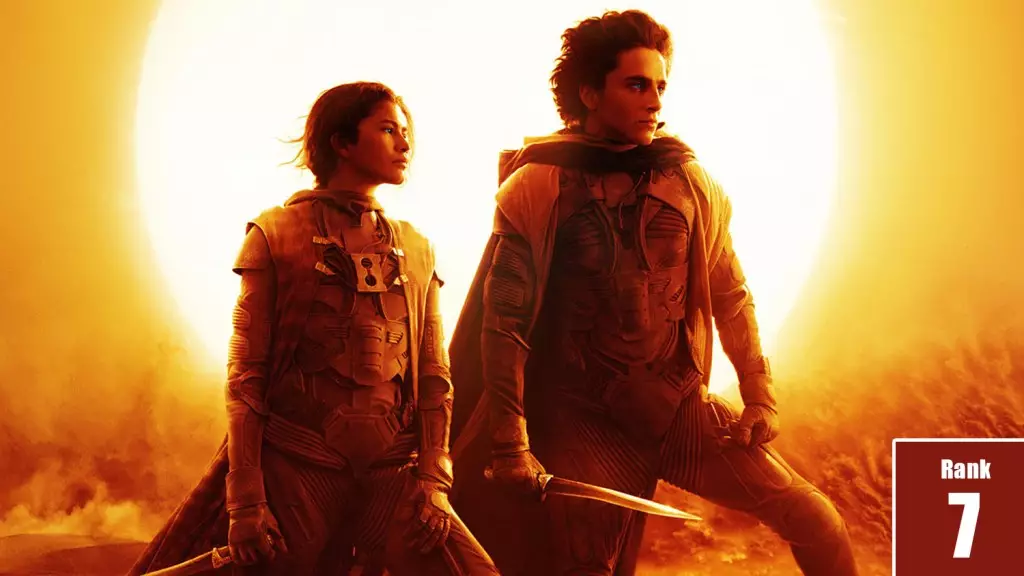The film industry is a complex web of creative ambitions and financial calculations, where the box office isn’t the sole indicator of a film’s success. “Dune: Part Two,” with its massive production cost of $190 million, exemplifies this notion exceptionally well, especially as we look at the statistics and decisions that have accompanied its release. While traditional box office performance remains a crucial element, its performance must also be evaluated in conjunction with the burgeoning streaming ecosystem. It’s not just about how much a film makes on opening weekend but how it continues to generate revenue across various platforms, which can make or break a studio’s fiscal year.
When industry giants like Disney and Warner Bros. grapple with significant budgets, the emphasis on traditional income streams is apparent. However, movies distributed by AMC and Apple may evaluate their successes through a different lens, measuring long-term viewer engagement rather than immediate returns. This disparity in assessment metrics creates an environment where studios must think strategically beyond the first-week box office—a lesson we will continue to unpack in 2024 and beyond.
The Importance of Timing and Strategy
“Dune: Part Two” also serves as a case study in the impact of timing and strategic decision-making. With the decision to delay the film’s release from November 2023 to early March of 2024, Warner Bros and Legendary exhibited their dedication to the film’s long-term success. The importance of promoting a star-studded cast, including talents like Zendaya and Timothée Chalamet, reveals an understanding of what contemporary audiences desire from cinematic experiences. A notable 91% of moviegoers reported that they had a vested interest due to the cast, underscoring the significance of star power in today’s entertainment industry.
In a world where film promotion can often be overshadowed by social media buzz, securing an opportunity for the cast to engage with audiences through promotional channels was a masterstroke. It demonstrates the need for studios to think dynamically about their release strategies, particularly in the wake of industry strikes and similar challenges that may limit promotional avenues.
The Intricacies of Audience Engagement
“Dune: Part Two” successfully attracted a diverse audience ranging from loyal fans of the original source material to younger viewers discovering the franchise through platforms like Max. Notably, the film found substantial traction among the 18-24 demographic, accounting for nearly one-third of its audience. This intersection of age groups reveals an essential lesson: films can thrive when they not only honor the legacies of their predecessors but also evolve to engage new audiences through modern distribution channels.
The appeal to younger viewers also indicates that studios should reevaluate their understanding of who their audiences are and how best to engage them. This should come as encouragement to future filmmakers and studios: embrace innovative storytelling techniques that resonate with a broader array of viewers to secure a film’s permanence in the cultural zeitgeist.
Maximizing Revenue Streams
In addition to engaging audiences, “Dune: Part Two” showcases how interlinked revenue streams can multiply a film’s success. With generating over $220 million through streaming revenues and TV deals post-release, the value of an extensive multi-platform distribution approach cannot be overstated. Studios like Warner Bros have effectively harnessed the power of “pay-two” and “pay-three” deals, where the financial returns from streaming platforms are increasingly being woven into the storyline of the film’s overall financial success.
Furthermore, securing $155 million in worldwide marketing expenditures highlights a commitment not just to film quality, but also to the marketing intelligence that drives subsequent revenue. A direct correlation exists between effective advertising strategies and profitability, a theme that should resonate throughout the industry as filmmakers and studio executives strategize around their next blockbusters.
Setting the Stage for the Future
Lastly, the overwhelming interest in a potential third installment—81% of viewers expressed a desire for it—signals a collective audience appetite that could embolden filmmakers to explore not just sequels, but possibly even deeper narratives within the Dune universe. This kind of engagement is invaluable for studios, as it fosters a sense of community among fans while bolstering future box office expectations.
In an industry rife with uncertainties, “Dune: Part Two” reminds us of the rigorous, multifaceted planning needed for a film to succeed. Each element, from budgeting and casting to marketing and audience engagement, plays a pivotal role in determining a film’s true value over time. As we continue to delve into 2024’s film landscape, the success and methodologies employed by Warner Bros and Legendary could very well set the tone for the future of movie-making.

